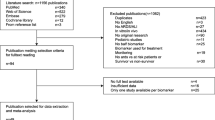Abstract
The objective of this prospective observational study was to determine if urine desmosine levels, a marker of lung injury, increase in response to the periopreative insults of anterior and posterior spine surgery. Desmosine, a stable breakdown product of elastin, has been proposed as a surrogate marker of lung injury in patients with COPD, tobacco use, and ARDS. We recently evaluated this marker in patients undergoing knee surgery, but the utility of desmosine as a marker of lung injury in patients undergoing spine surgery remains unstudied. In this study, we enrolled ten consecutive patients, who underwent anterior/posterior spine surgery. Patient demographics and perioperative data were recorded. Urine samples were collected at baseline, 1 day, and 3 days postoperatively and analyzed for levels of desmosine using a previously validated radioimmunoassay. Desmosine levels were 35.9 ± 18.2 pmol/mg creatinine at baseline, 38.7 ± 11 pmol/mg creatinine on postoperative day 1, and 70.5 ± 49.1 pmol/mg creatinine on postoperative day 3, respectively. Desmosine/creatinine ratios measured on day 3 postoperatively were significantly elevated compared to levels at baseline, and represented a 96.3% increase. No difference was seen between levels at baseline and day 1 postoperatively. In conclusion, we were able to show a significant increase in urine desmosine levels associated with anterior/posterior spine surgery. In the context of previous studies, our findings suggest that desmosine may be a marker of lung injury in this setting. However, further research is warranted for validation and correlation of desmosine levels to clinical markers and various degrees of lung injury.

Similar content being viewed by others

References
Urban MK, Jules-Elysee KM, Beckman JB, et al. Pulmonary injury in patients undergoing complex spine surgery. Spine J. 2005;5:269–76.
Urban MK, Urquhart B, Boachie-Adjei O. Evidence of lung injury during reconstructive surgery for adult spinal deformities with pulmonary artery pressure monitoring. Spine. 2001;26:387–90.
Jules-Elysee K, Urban MK, Urquhart BL, et al. Pulmonary complications in anterior-posterior thoracic lumbar fusions. Spine J. 2004;4:312–6.
Starcher B, Green M, and Scott M. Measurement of urinary desmosine as an indicator of acute pulmonary disease. Respiration.1995; 62: 252–257.
Stone PJ, Konstan MW, Berger M, et al. Elastin and collagen degradation products in urine of patients with cystic fibrosis. Am J Respir Crit Care Med 1995;152: 157–162.
Cocci F, Miniati M, Monti S, et al. Urinary desmosine excretion is inversely correlated with the extent of emphysema in patients with chronic obstructive pulmonary disease. Int J Biochem Cell Biol 2002;34: 594–604.
Gottlieb DJ, Stone PJ, Sparrow D, et al. Urinary desmosine excretion in smokers with and without rapid decline of lung function: the Normative Aging Study. Am J Respir Crit Care Med 1996;154: 1290–1295.
McClintock DE, Starcher B, Eisner MD, et al. for the National Heart, Lung, Blood Institute Acute Respiratory Distress Syndrome Clinical Trial Network. Higher urine desmosine levels are associated with mortality in patients with acute lung injury Am J Physiol Lung Cell Mol Physiol 2006;291: L566–L571.
Memtsoudis SG, Starcher B, González Della Valle A, et al. (2009) Urine Desmosine as a Marker of Lung Injury Following Total Knee Arthroplasty. A Pilot Study. HSS J, 5:154–158
Starcher B and Scott M. Fractionation of urine to allow desmosine analysis by radioimmunoassay. Ann Clin Biochem 1992;29: 72–78.
Starcher B, Conrad M. A role for neutrophil elastase in the progression of solar elastosis. Connective Tissue Research 1995;31:133–140.
Zeger, S. L. and Liang, K-Y. Longitudinal Data Analysis for discrete and continuous outcomes. Biometrics 1986;42: 121–130
Starcher BC. Lung elastin and matrix. Chest 2000;117: 229 S–234 S.
Rosenbloom J, Abrams WR, Mecham R. Extracellular matrix 4: the elastic fiber. FASEB J. 1993;7: 1208–1218.
Starcher B, Peterson B. The kinetics of elastolysis: elastin catabolism during experimentally induced fibrosis. Exp Lung Res. 1999;25:407–24.
Takahashi S, Kitagawa H, Ishii T. Intraoperative pulmonary embolism during spinal instrumentation surgery. A prospective study using transoesophageal echocardiography. J Bone Joint Surg Br.2003;85:90–4.
Author information
Authors and Affiliations
Corresponding author
Additional information
Each author certifies that he or she has no commercial associations (e.g., consultancies, stock ownership, equity interest, and patent/licensing arrangements, etc.) that might pose a conflict of interest in connection with the submitted article. This study was performed with funds from the Hospital for Special Surgery Anesthesiology Young Investigator Award (provided to S. Memtsoudis) by the Department of Anesthesiology at the Hospital for Special Surgery.
Each author certifies that his or her institution has approved the reporting of these cases, that all investigations were conducted in conformity with ethical principles of research, and that informed consent for participating in the study was obtained.
Level of Evidence:
Level III. Prognostic study
Rights and permissions
About this article
Cite this article
Memtsoudis, S.G., Starcher, B., Ma, Y. et al. The Utility of Urine Desmosine as a Marker of Lung Injury in Spine Surgery. HSS Jrnl 6, 160–163 (2010). https://doi.org/10.1007/s11420-010-9158-z
Received:
Accepted:
Published:
Issue Date:
DOI: https://doi.org/10.1007/s11420-010-9158-z



